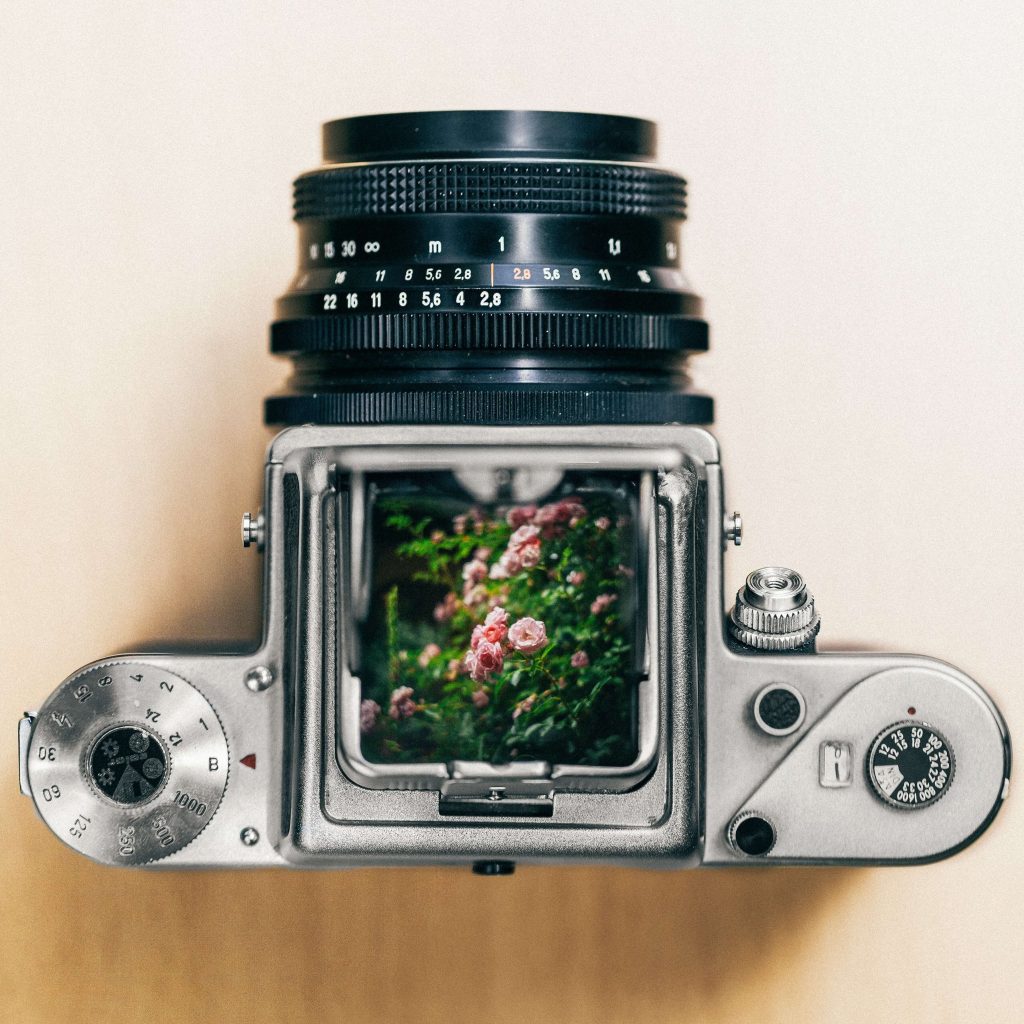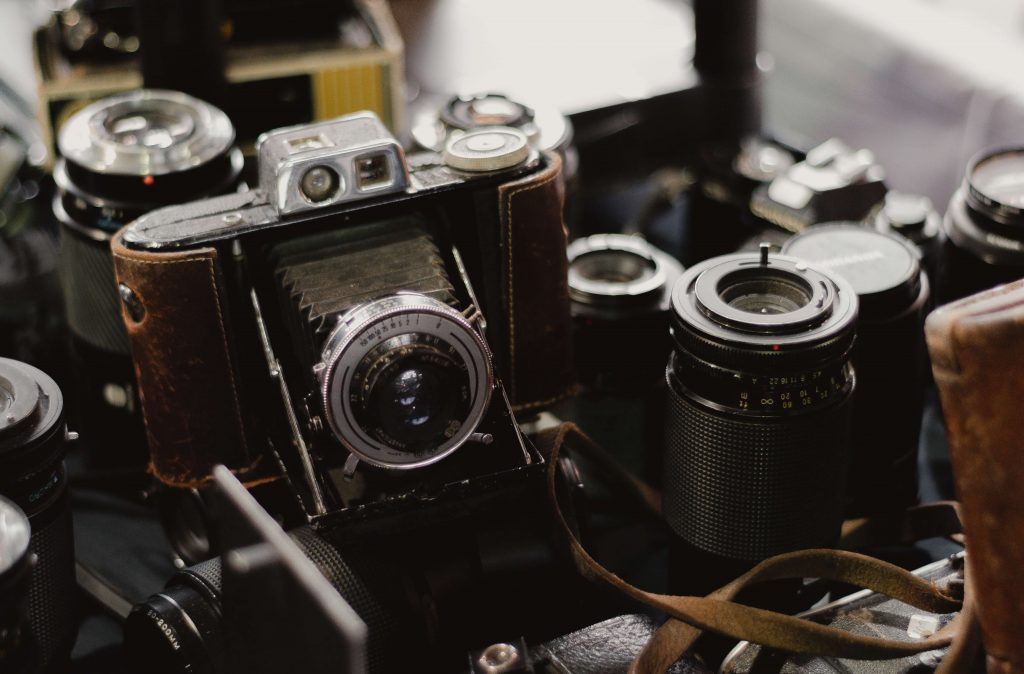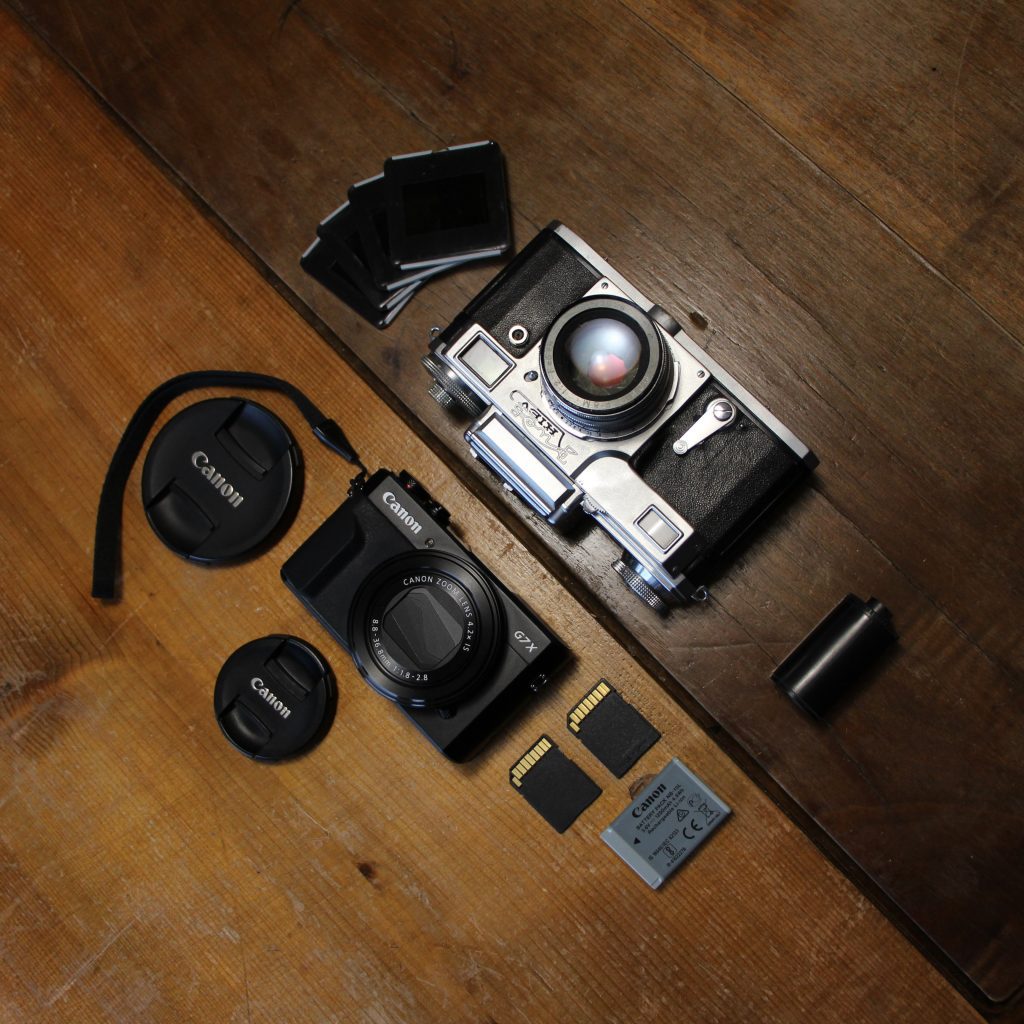
Camera technology has come a long way since the first camera obscura was invented in the 16th century. Today, we can access many cameras, from old-school films to advanced digital ones. Choosing the right camera for your needs is crucial to capturing the perfect shot. In this guide, we’ll explore the pros and cons of analog and digital cameras to help you make an informed decision.

Analog cameras, also known as film cameras, capture images on photographic film. There are various types of analog cameras, including point-and-shoot, SLR, and instant cameras. One of the significant advantages of analog cameras is the unique look and feel of the images they produce, which can evoke a sense of nostalgia. Analog cameras are also relatively simple to use, with limited settings and features.
However, analog cameras have some significant drawbacks, such as the cost of film and processing. Additionally, there’s no instant gratification when using an analog camera; you have to wait until the film is processed to see the results. Furthermore, there are limited options for editing and sharing analog photos compared to digital photos.
Analog cameras, also known as film cameras, capture images on photographic film instead of electronically like digital cameras. There are various types of analog cameras available, but the two most common types are film cameras and instant cameras.
Film cameras are the most traditional type of analog camera. They capture images on photographic film, which must be manually loaded into the camera. Film cameras come in two main categories: point-and-shoot and SLR (single-lens reflex). Point-and-shoot cameras are compact, easy to use, and usually have a fixed lens. SLR cameras are more advanced and allow you to change lenses and adjust settings such as aperture and shutter speed for more control over your images.
Instant cameras, or Polaroid cameras, capture images on particular instant film that produces a print within seconds of taking the photo. Instant cameras are famous for their fun and spontaneous nature and are often used for capturing memories at events and parties. Instant cameras come in two main categories: analog and digital. Analog instant cameras are similar to traditional film cameras, while instant digital cameras store images electronically and produce a physical print via a built-in printer.
While both types of analog cameras offer a unique and nostalgic look and feel, they do have some disadvantages. Film cameras require the user to load and unload film manually, which can be time-consuming and costly. Instant cameras use particular film, which can be expensive and produce lower-quality images than film or digital cameras. Despite these drawbacks, many photographers still prefer the authenticity and charm of analog cameras.
There are many different models of analog cameras available, each with its own unique features and capabilities. Here are some of the most popular and iconic analog camera models:
These are just a few examples of the many different analog camera models available. Each model has its own unique strengths and capabilities, so it’s important to choose a camera that fits your photography needs and preferences.
Analog photography has its own pros and cons when compared to digital photography. One of the pros of analog photography is that it offers a unique look and feel that cannot be easily replicated by digital cameras. Analog cameras use a chemical process to capture images on film, resulting in a distinct grainy texture that can be highly admired by many photographers. However, analog photography also has some drawbacks, such as the time-consuming process of developing the film and the limited number of shots that can be taken.
In contrast, digital photography offers the advantage of immediate previewing and transferring of images using a memory card or hard drive. Digital cameras also come with sensors that can perform well in low light conditions, resulting in high image quality even in challenging lighting. Ultimately, whether to choose analog or digital technology comes down to personal preference and the specific needs of the photographer.

Digital cameras capture images electronically, storing them on a memory card. There are various types of digital cameras, including point-and-shoot, DSLR, and mirrorless cameras. One of the significant advantages of digital cameras is this is better than analog camera and the instant feedback they provide, allowing you to review your photos right away. Digital cameras also offer a wide range of features and settings, making them a versatile option for all types of photography and digital videos.
However, digital cameras can be expensive initially, and you also need to consider the cost of storage and backup solutions. Additionally, there’s a risk of over-relying on post-processing, which can detract from the authenticity of your images.
The main difference between analog and digital cameras is digital cameras capture images electronically, unlike analog cameras that use photographic film. Digital cameras offer a wide range of features and settings, and they are available in various types.
Here are the three most common types of digital cameras:
Point-and-shoot cameras are compact, easy-to-use cameras that are perfect for everyday photography and film photography They usually have a fixed lens and automatic settings, which makes them ideal for beginners or those who want a simple camera. Point-and-shoot cameras are great for capturing memories, travel photos, and other casual shots.
Digital single-lens reflex (DSLR) cameras are the most advanced type of digital camera. They are popular among professional photographers because they offer complete control over the image-making process. DSLR cameras have a mirror that reflects light from the lens to an optical viewfinder, which allows the photographer to see exactly what the camera is capturing. They also have interchangeable lenses, which means you can swap out lenses to suit different types of photography.
Mirrorless cameras are similar to DSLR cameras but do not have a mirror. Instead, they display the image using an electronic viewfinder or LCD screen. Mirrorless cameras are smaller and more lightweight than DSLR cameras, making them ideal for travel and street photography. They also offer interchangeable lenses and manual settings, which give photographers more control over their images.
Each type of digital camera has its advantages and disadvantages. Point-and-shoot cameras are easy to use and affordable, but they offer limited manual control. DSLR cameras offer complete control and high-quality images but can be bulky and expensive. Mirrorless cameras are a hybrid between the two, offering manual control and portability, but they can also be expensive. Ultimately, the type of digital camera you choose depends on your photography needs and preferences.
These are just a few examples of the many different digital camera models available. When choosing a digital camera, it’s important to consider your specific needs and preferences, such as image quality, shooting speed, and video capabilities, among others.
Digital photography has revolutionized the way we capture, store and share images. One of the pros of digital photography is that it allows us to take as many pictures as we want without wasting film. We can also preview and edit images on the spot, which can save time and enhance the final result. Digital photography is also less cumbersome than analog photography as we don’t need to carry around bulky cameras and assorted equipment.
Another advantage is that we can store thousands of photos on a single memory card, making it easy to keep all our pictures in one place. However, one drawback of digital photography is that it can be prone to technical glitches and data loss, something which was less of a problem with analog photography. Moreover, digital images can appear harsh or oversaturated, lacking the nuances and tactile qualities of analog images. Ultimately, what matters most is the individual’s preference and the purpose for which the pictures are taken.
Digital photography offers numerous advantages over traditional film camera systems. Firstly, it is more cost-effective in the long run as digital images can be stored and edited on a computer, eliminating the need for film and printing costs. Additionally, digital cameras offer instant feedback and the ability to review and delete images immediately, allowing for more efficient shooting and fewer missed shots.
Digital images are also easily shareable, as they can be quickly uploaded and sent via email or social media. Sophisticated editing tools permit the photographer to manipulate the image and correct any errors or imperfections more quickly and easily than traditional methods. Finally, digital cameras often have superior image quality, dynamic range, and low-light performance compared to film cameras. These advantages make digital photography a popular choice for both professional photographers and hobbyists alike.
Analog photography is the process of capturing images on film, while digital photography uses electronic sensors to capture and store images on memory cards or hard drives. Analog cameras tend to be simpler in design and operation and can produce unique and nostalgic images with a certain look and feel. However, the cost of film and processing can add up quickly, and analog cameras offer limited features and settings compared to their digital counterparts.
On the other hand, modern digital cameras provide higher resolution, instant feedback, easy sharing and editing of digital files, and a wide range of features and settings, but can be more expensive initially and require storage and backup solutions. Overall, the choice between analog and digital photography depends on the photographer’s purpose, budget, experience level, desired features and settings, and image quality preferences.
When choosing between analog and digital cameras, there are several factors to consider, such as:
The primary difference between digital and analog security cameras is that digital cameras convert analog signals into digital signals before storage, while analog cameras record video through coaxial cables. Digital cameras are more advanced than their analog counterparts, having higher resolution and image quality. Encryption is also more straightforward with digital cameras; this means the footage they record is more secure than analog cameras.
For analog cameras, the installation process can be more complicated due to cable routing, and they require special coaxial cables for proper use. However, they do have more affordable options than digital cameras. Currently, IP cameras are becoming more popular as they offer both analog and digital security features. Overall, both analog and digital security cameras have unique features and capabilities, making them effectively useful in specific situations.
In summary, choosing between an analog camera and a digital camera comes down to personal preference and needs. If you’re looking for a unique, nostalgic look and feel, analog cameras may be the way to go. However, if you’re looking for instant feedback, versatility, and easy editing and sharing options, digital cameras are the better choice.
Based on your needs, and the better option we recommend investing in a digital camera with a good range of features and settings. While analog cameras have their charm, the versatility and convenience of digital cameras make them the better choice for most photographers.
As camera technology continues to evolve, we can expect even more innovative options in the future. Regardless of which type of camera you choose,analog or digital the most important thing is to have fun and capture memories that will last a lifetime.